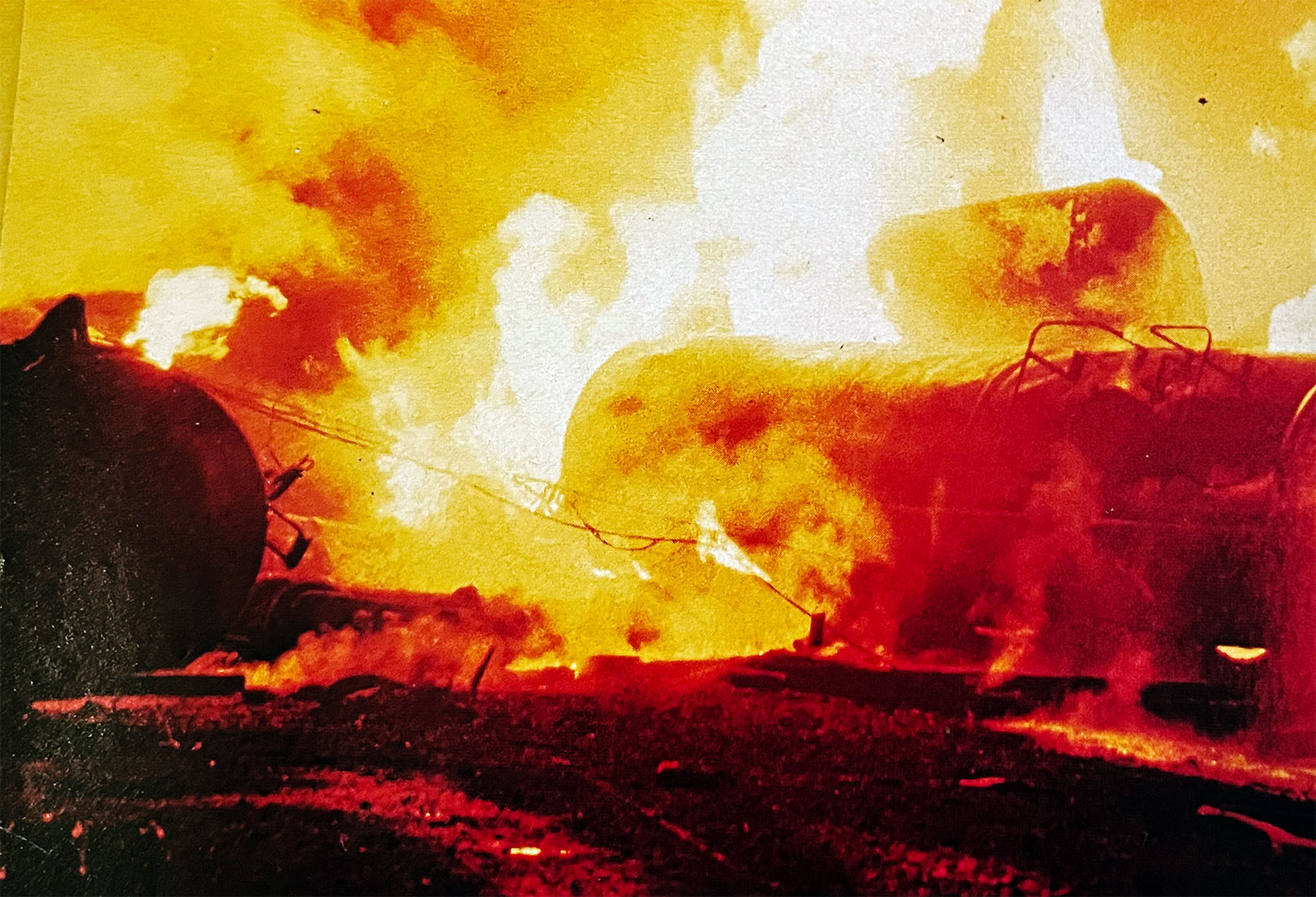On the evening of November 10, 1979, Canadian Pacific Train 54 entered Mississauga on its way to Toronto. The 106-car freight train had a tanker filled with 90 tons of chlorine gas and 39 other cars filled with butane, propane, toluene, styrene and other highly flammable chemicals.
At 11:53 pm, at Mavis Road, between Burnhamthorpe Road and Dundas Street, friction caused by an improperly lubricated joint snapped an axle on a car. Not only did a pair of the car’s wheels fly off into a resident’s backyard, but the friction caused sparks. As the train derailed, the sparks turned into a fire. When the cars crashed into each other, they ruptured, and the cars filled with propane caught fire and exploded. The fireball went 1,500 meters (5,000 feet) into the sky. People as far as 100 km (60 miles) away saw it.
At 12:01 am, another explosion occurred. People as far away as Niagara Falls, Oshawa, and Peterborough saw the flash. The noise awakened tens of thousands of people in Mississauga and Toronto. The tanker of chlorine was buried under the burning cars. If that car were to rupture and catch fire, it would create a massive cloud of chlorine gas, which was used to kill soldiers in World War I. With the threat of a large poison cloud heading into Canada’s then ninth-largest city, the Peel Region Police Chief ordered an evacuation of the area.
A quarter of a million people, two-thirds of the city’s population, were evacuated out of their homes and into shopping centres, the International Centre (a convention centre), hotels, and other people’s homes. It became the largest peacetime emergency evacuation in North American history until Hurricane Floyd caused 3 million people to flee on the east coast of the United States in 1999.
St. John Ambulance volunteers from Toronto, Halton Peel, Guelph, Oshawa, Whitby, and other divisions came to help evacuate people from three hospitals and two nursing homes. At Mississauga General Hospital, over 85 ambulances from different organizations, some as far away as Kingston, lined up to carry patients away. St. John Ambulance driver Hugh McBryde said he had never seen so many ambulances in one place.1
St. John Ambulance members were stationed in about ten high schools that housed evacuees. There they made thousands of sandwiches and obtained medication for critically-ill people.
Some evacuees went to a mass care centre first, where they would receive medical attention if needed and find a place to which to relocate. During the emergency, 15 mass care centres were set up in schools, shopping plazas, colleges, lodge halls, and a sports arena. Fourteen of them were run by the Canadian Red Cross, and one was run by St. John Ambulance.2
Fortunately, chlorine didn’t escape, and firefighters brought the fires under control. Miraculously, nobody died. Evacuees began returning to some parts of Mississauga on November 13, and the immediate vicinity of the fire re-opened on the evening of November 16. The chlorine tank was emptied on November 19.
St. John Ambulance members provided first aid and evacuation transportation 24 hours per day until the emergency was over.
________
1 Massive Convoy, photograph by Jeff Goode, Toronto Star, object number TSPA_0001047F, Toronto Public Library Digital Archive https://digitalarchive.tpl.ca/objects/360589/massive-convoy
2 Mississauga Evacuees: A Report on the Closing of Canada’s Ninth Largest City, NUS Corporation
